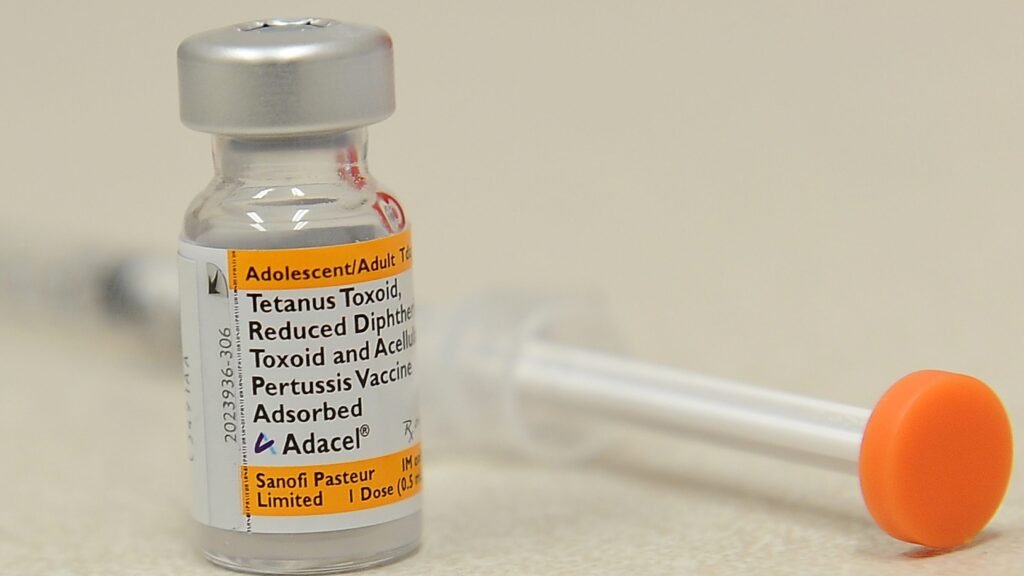The number of pertussis cases has increased sharply from a year ago, but remains in line with pre-pandemic numbers, the Centers for Disease Control and Prevention announced Thursday.
The CDC, which tracks pertussis cases using the National Surveillance System, noted that as of Oct. 5, more than five times as many pertussis cases have been reported this year compared to the same period in 2023.
The CDC reported 17,579 pertussis cases in the United States through the week of October 5th. In October last year, that number was 3,962, an increase of just over 13,600.
Pertussis, also known as whooping cough, is an infectious disease caused by the Bordetella pertussis bacteria, according to the CDC.
The agency said children under 1 year old are most likely to develop severe illness or death if they develop whooping cough. This is because their immune systems are still developing.
“This age group continues to have the highest reported prevalence of pertussis,” the CDC said.
The CDC’s update comes after some state and local health officials issued notices of rising cases earlier this year.
Is there a whooping cough vaccine?
According to the CDC, the most effective way to fight whooping cough is to get vaccinated, but “the protection provided by vaccination wears off over time,” so even vaccinated people can still get whooping cough. The CDC says there is.
The agency recommends vaccination for all age groups.
Symptoms to watch out for
Experts say it usually takes five to 10 days for pertussis symptoms to appear after exposure to the bacteria that causes pertussis. It may take up to three weeks for symptoms to appear.
Symptoms can appear like those of a cold, and health care workers often don’t diagnose the disease until patients develop more severe symptoms, according to the CDC.
Early symptoms usually include:
Runny or stuffy nose Low-grade fever (below 100.4 degrees Fahrenheit) Mild, occasional cough Your baby may have trouble breathing or experience a life-threatening respiratory arrest. Apnea may cause your baby to turn pale.
Subsequent symptoms may include:
Rapid, violent, uncontrollable coughing attacks You may experience coughing attacks that last from 1 to 6 weeks, but can last up to 10 weeks.
According to the CDC, the coughing fits that people with whooping cough experience can cause them to make a high-pitched whistling sound when they breathe in, and even cause them to vomit during or after a coughing attack. Some patients end up with broken ribs.
In teens and adults, whooping cough can cause complications such as pneumonia.
“Complications are usually less serious in this older population, especially in those who have been vaccinated against pertussis,” the CDC said. “However, if the complications are severe, some people may require hospital treatment.”
Experts believe the disease is often underreported.
long-standing whooping cough
According to the CDC, cases of whooping cough began to rise gradually in the 1980s and peaked at 48,277 in 2012. Until the onset of the coronavirus disease (COVID-19) pandemic in 2020, the number of reported cases remained high.
The CDC believes that the increase in cases may be related to:
More healthcare providers are aware of and diagnose the disease Increased access to laboratory diagnosis Increased surveillance and reporting to public health departments Reduced immunity due to vaccines
The number of pertussis cases has declined during and after the coronavirus pandemic, but the number of cases is increasing nationally, according to the CDC.
“Mitigation measures used during the pandemic (such as masking and remote learning) may have reduced pertussis transmission,” the CDC said on its website.
Contributor: Gabe Hauari, USA TODAY
Saleen Martin is a reporter for USA TODAY’s NOW team. She is from Norfolk, Virginia – 757. Follow her on Twitter.@SaleenMartin Or email sdmartin@usatoday.com.

